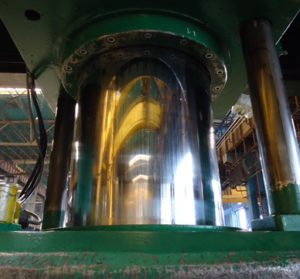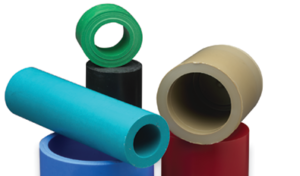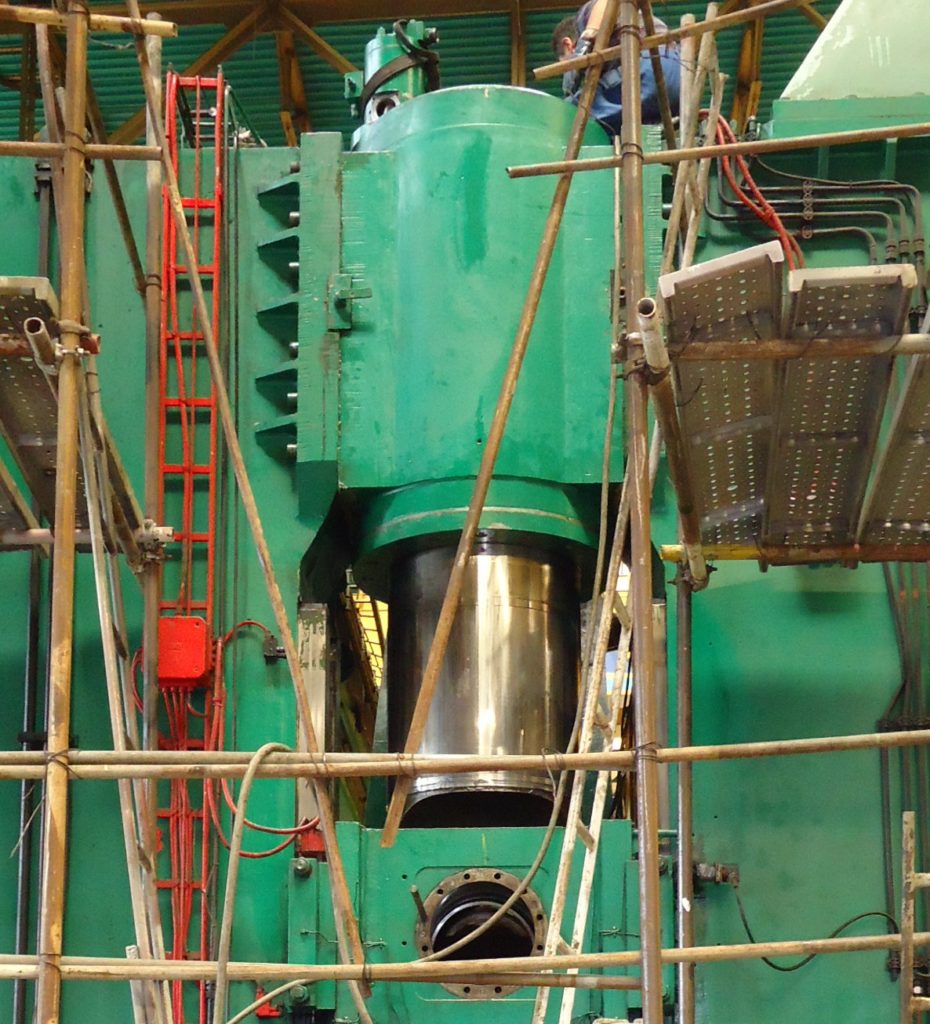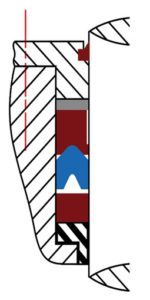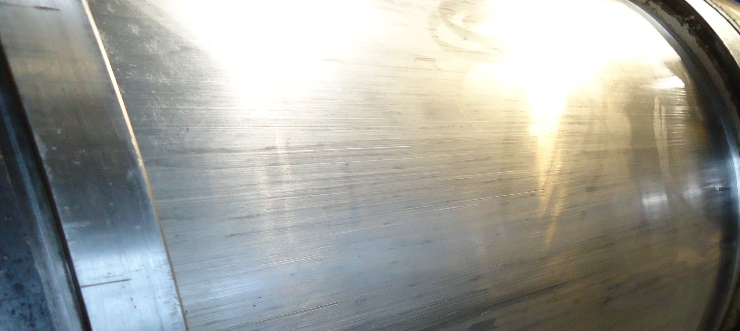
Scored plunger surfaces that can result in leakage are one of the issues that can be alleviated with optimal sealing.
Upgrading cylinder sealing for hydraulic presses can pay off in reliability, longer asset life, and shorter repair time.
It’s a common dilemma for the operators of heavy-duty hydraulic systems and press machines around the world: When large diameter cylinders become worn and/or damaged – should you invest in new cylinders or repair the existing ones? While the investment in new cylinders is significant, the repair of existing cylinders can result in costly downtime, delayed production schedules, and productivity costs.
Most plant managers elect to keep older presses running as long as possible with minimal downtime and cost. To achieve this goal, it is vital to create optimal cylinder sealing. Poor sealing can cause a host of problems ranging from hydraulic fluid leakage to complicated seal replacement work. These issues are easily avoided with solid upfront planning and good sealing choices. Below you’ll find some quick tips to help accomplish that challenge.
Checklist for Optimal Hydraulic Press Sealing
1. Choose Seal Materials Based on Condition of the Press Cylinders
To help determine the optimum seal profile(s) and seal materials, examine the physical conditions of each press cylinder. Take into consideration:
-
- Worn bushings
- Metallic components
- Scored, damaged surfaces
For a leak-free operation, the seal elements must compensate for the radial motion of the plungers and conform to any surface irregularities. (In case of heavily damaged surfaces, this might substantially reduce the leak rate but not eliminate it completely.)
Seal Material: High extrusion-resistant sealing materials (such Chesterton AWC800) will help avoid extrusion-type failures.
Seal Support: In case of excessive clearance (an extrusion gap) between the ram and the gland/bushing, use an anti-extrusion ring (made of engineered plastic) to provide support to the seal and to reduce the risk of extrusion of the seal material into the gap.
Material Combinations: The proper seal material combination lets the seal conform to surface irregularities. A softer (low durometer such Chesterton AWC805 or AWC825) polyurethane seal material can conform easier to worn surfaces than a high durometer material. But to withstand operational pressures, a soft material cannot be used alone. It often requires a combination of soft and hard materials such as used in the Chesterton 11K (below) for best reliability.
2. Reduce Friction by Selecting the Right Seal Material
Both seal materials and seal design have the ability to impact frictional forces. Different seal materials (elastomers and polyurethanes) have different coefficient of friction values.
- As a general guide, polyurethanes have a lower coefficient of friction than elastomeric seal materials/rubbers
- Some sealing types (types/materials) have a significant impact on the frictional force, which can cause excessive contact heat generation (thermal load and material degradation) and accelerated wear-out. For example, fabric-reinforced rubber V packing, one of the most commonly used types of sealing in press cylinders, generates uncontrolled friction.
3. Reduce Friction and Avoid Fluid Contamination by Selecting an Effective Seal Design
The seal design also has the biggest impact on dealing with frictional forces. A lip seal is designed with an automatic sealing effect that optimizes the sealing force according to pressure conditions in the press cylinder. A flexible lip design can also extend the sealing capability in certain seal groove space variations.
Combine a lip seal with a polyurethane sealing material (with a lower coefficient of friction), and you have the optimum sealing force. It reduces the friction of seal lips and counter-face metal parts (plungers and cylinder bores). In the end, the wear will be reduced while the service lifetime of the seal systems will be increased (MTBF and MTBR). Using this method, time-consuming press shutdowns and repair of press cylinders can be avoided in most cases.
4. Functionality (Speed of Installation/Repair & Maintainability)
A broken down hydraulic cylinder has a tremendous impact on the entire production line. Shorter seal installation and repair times are an essential consideration.
Investment in a split seal design is an important return on investment in that they can reduce installation and repair to a fraction of the time involved with standard seals that require complete equipment disassembly. Split seal design can help to reduce seal replacement time to 30-40% of endless v-ring type of seals.
Equipment accessibility is another consideration. Where press cylinder stuffing boxes are difficult to access, maintenance staff benefit greatly from a split seal solution. The bottomline is that the press being worked on can get back online in the shortest possible time. Modern, high-performance seals are also designed to provide leak-, and maintenance free operation. This benefits the plant in terms of both maintenance and safety.
5. Select Seals that Do Not Require Maintenance
Most traditional V packing requires periodic maintenance after installation to compensate for wear and supplement initial lip interference. This requires the re-adjustment of the seal set compression, gradually removing shims.
In contrast, modern seals which are also designed to eliminate future shimming and pre-compression readjustment, do not require mechanical compression. As a result, using them reduces maintenance labor and the workload placed on existing, often smaller, maintenance staffs.
The Bottomline
High-performance seals and properly selected sealing systems will help to manage your press machine/press line asset more cost-effectively and save time. Reduced maintenance demand and a decreased possibility of unplanned shutdowns can provide greater availability, higher production and more predictive maintenance of the press cylinders. At the same time, the seal system upgrade prolongs the total life cycle of your press line. Above all, these choices can lead you to achieve your asset management goals and optimize the service/performance level of your plant.
Download Our Free E-Book: How to Extend the Life of
Older Wood-Based Panel Hydraulic Presses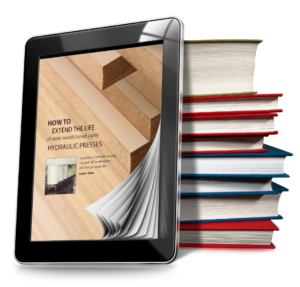
Learn more tips for setting up reliable sealing and issues particular to the wood-based panel manufacturing industry. Request it now.
